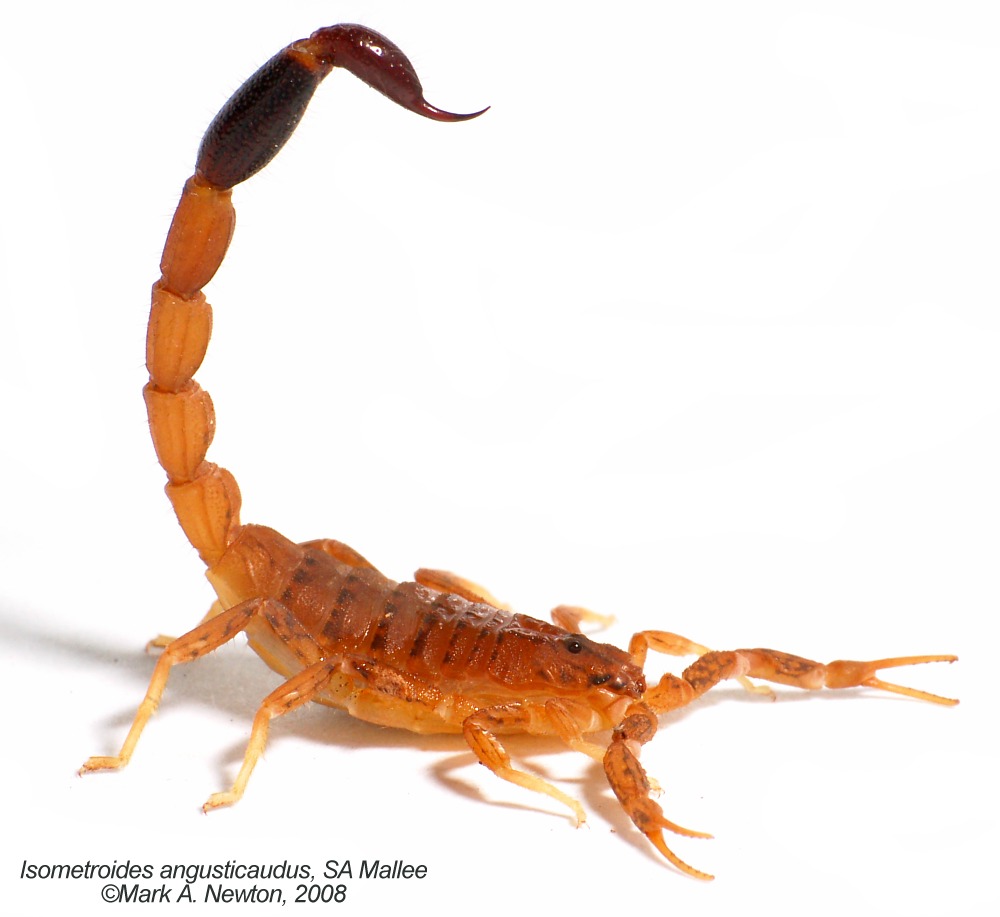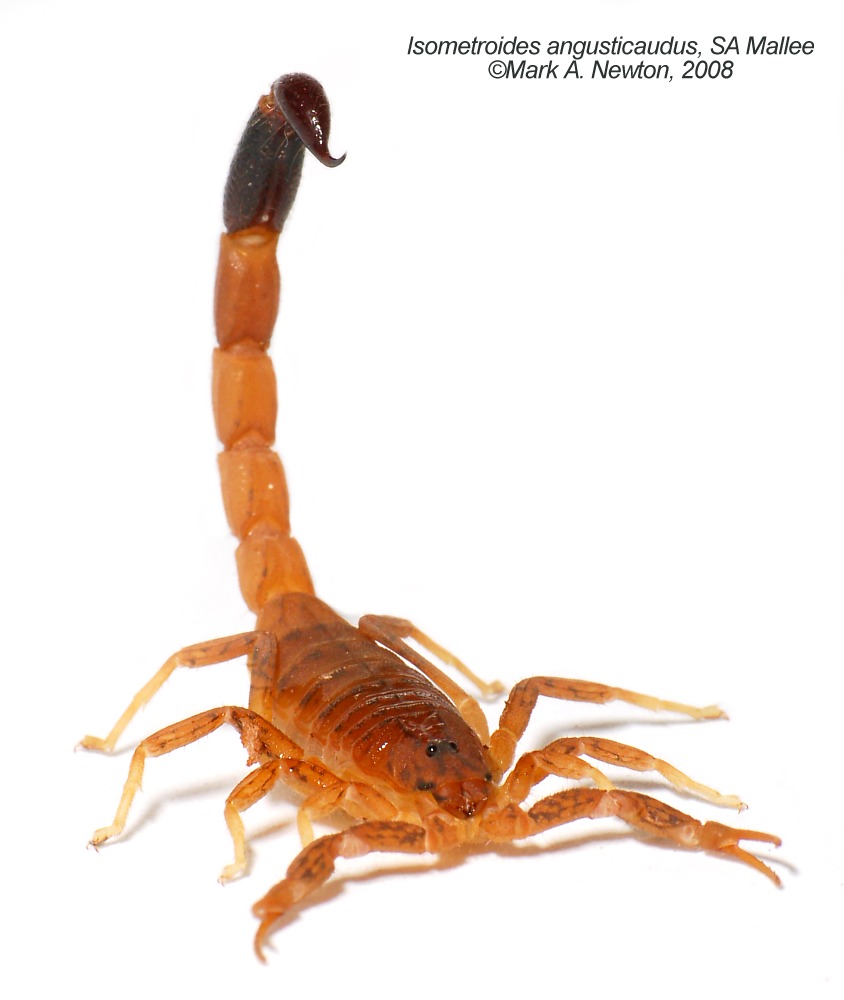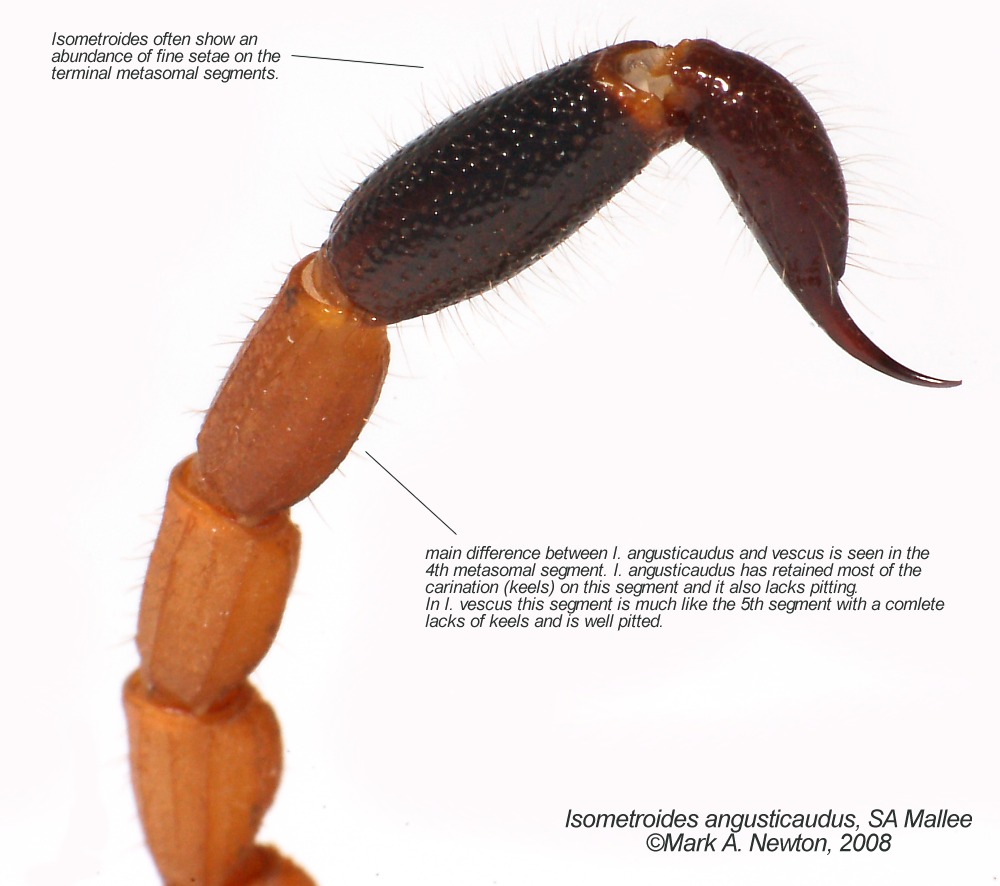|
- the Spiral Burrow Library -
Isometroides angusticaudus
Mark A. Newton BSc
Isometroides are modified Lychas that have deviated enough for taxonomists to recognise them as a valid genus. The most obvious differences are the 4th and 5th metasomal segment as mentioned and the unusual shaping of the telson. The subaculear tubercle is lost and the vesicle and aculeus flow into each other, often in a very extreme blending of the two to almost form one structure. According to research conducted mostly by the well recognised Western Australian arachnologst Dr. Barbara York Main this scorpion is often found occupying the burrows of trapdoor spiders. It has even been found inside the burrow feeding on a freshly killed spider. It does appear to specialise on spiders, although I have also found species of Lychas occupying spider burrows, so it may not be as unique as once thought. It does though seem to have evolved in such a way that indicates it may no longer excavate its own burrow. The lack of or reduction in carinae tend to suggest it does little excavating. It seems to have evolved a highly sensitive array of setae on the distal metasomal segments, which seem to be reflected in the unusual way it uses its metasoma. This species shows an almost prehensile tail. If you touch the tail, the scorpion will try to wrap its tail around the object it senses, assumedly using the dense array of fine setae to feel the shape of the object. Just what is going on here I dont know as yet, but I do not see this behaviour in other species. They are a fascinating animal..take a look. 
|


